The personifications of the Adriatic and Tyrrhenian Seas, inspired by the Roman models placed by Michelangelo in nearby Campidoglio, the two fountains on either side of the entrance stand out
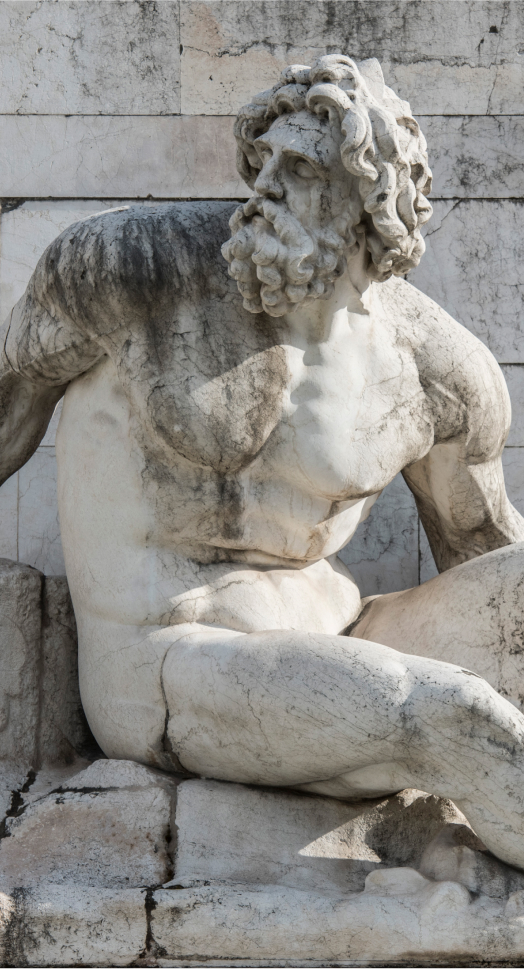
The pair of fountains with the personification of the two main Italian seas on the front of the Vittoriano was already envisaged in Giuseppe Sacconi's first project. The Milanese sculptor Emilio Quadrelli (1863-1925) created The Adriatic Sea; Pietro Canonica from Piedmont (1869-1959) The Tyrrhenian Sea. Commissioned in 1908, the two artists delivered the works in 1911, in time for the monument's inauguration on 4th June 1911.
The declared model of the two figures are the statues of rivers which, in ancient times in the Baths of Constantine, in the Renaissance were placed by Michelangelo in the Piazza del Campidoglio, at the foot of the staircase of Palazzo Senatorio.
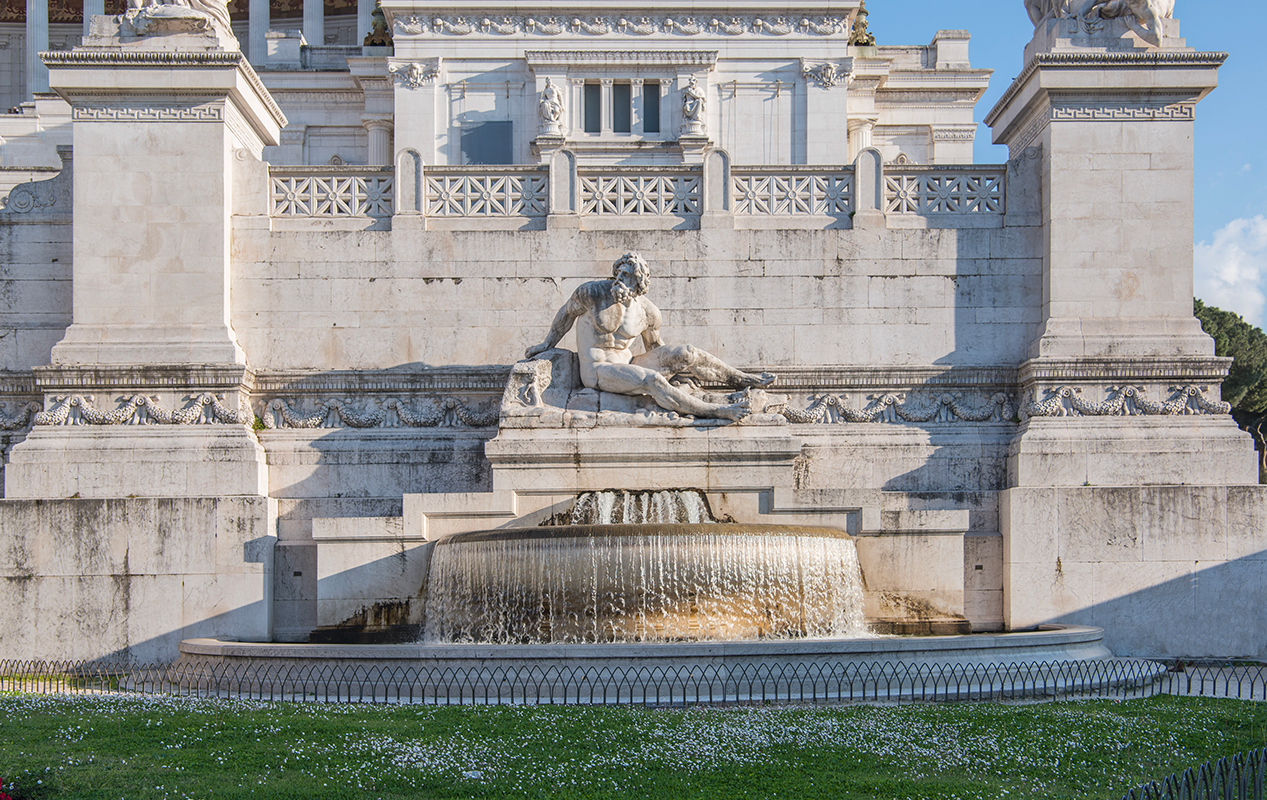
Quadrelli represents The Adriatic Sea stretched out with his gaze turned to the east, while he brings his right hand to his forehead, as if to protect himself from the light, and rests his left hand on the head of the lion, symbol of Venice.
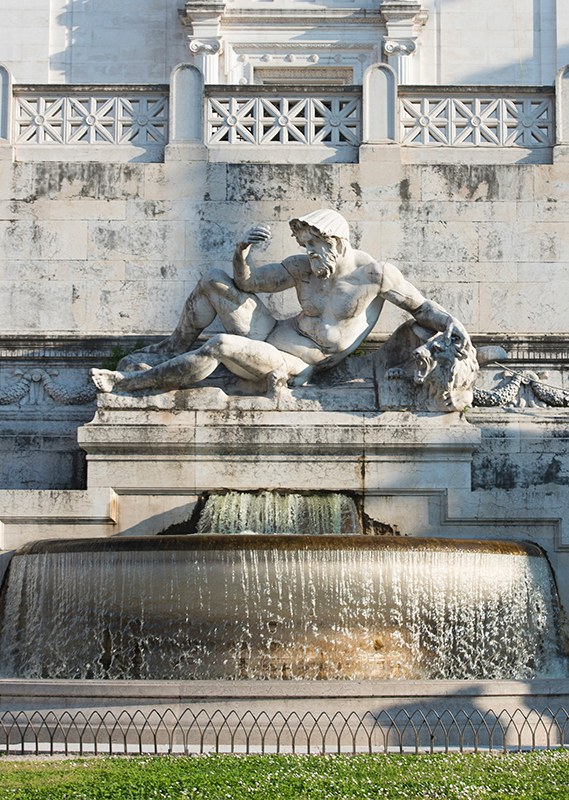
Canonica presents The Tyrrhenian Sea lying with his face facing east. One hand rests on the head of the Capitoline She-wolf, the best known symbol of Rome, the other hand on a bas-relief adorned with the figure of Parthenope, which instead alludes to the city of Naples In Greek mythology, in fact, the siren Parthenope used her song to bewitch sailors, who lost control and ended up against the rocks. When Ulysses managed to pass by unharmed, Parthenope killed herself. Her body was brought up from below by the waves to the shores of the Gulf of Naples, where it became an object of veneration.
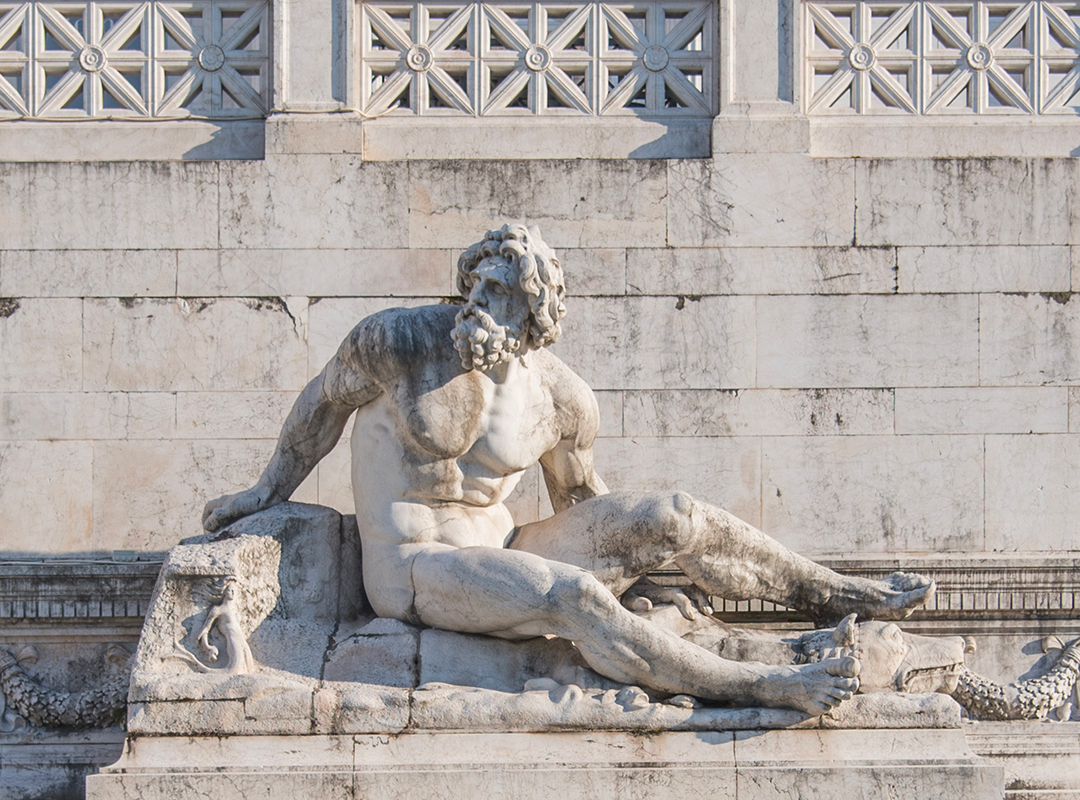
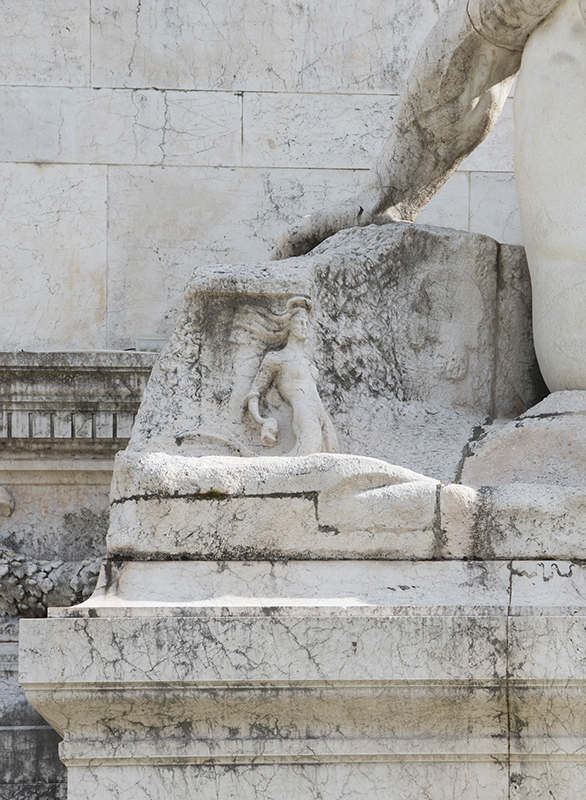
The two fountains also constitute a beautiful example of hydraulic engineering. They required an enormous amount of water and therefore their operation was very expensive. In order to solve the problem, two motor-pump groups were therefore installed: they took the water from the lower tank and raised it up to the upper basin, thus ensuring its recirculation. At the same time, a tank with a capacity of 500 cubic metres was also built to allow the fountains to be quickly filled after cleaning and also to raise and lower the gate.